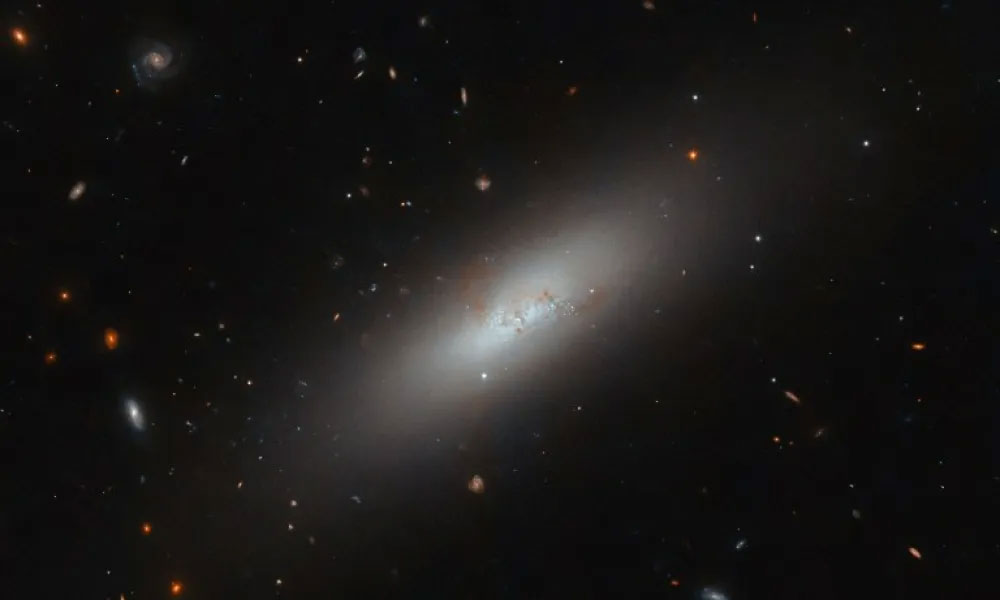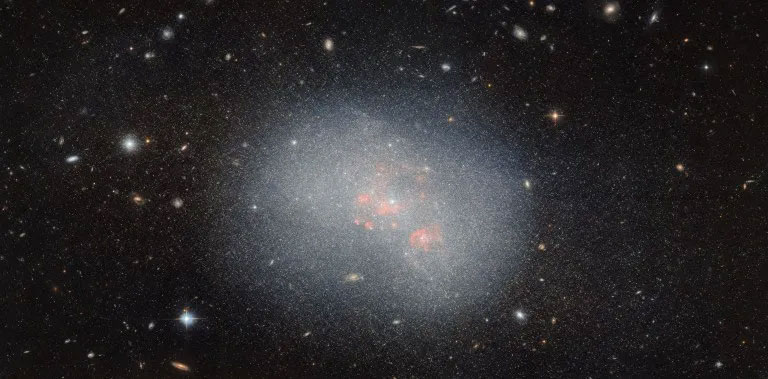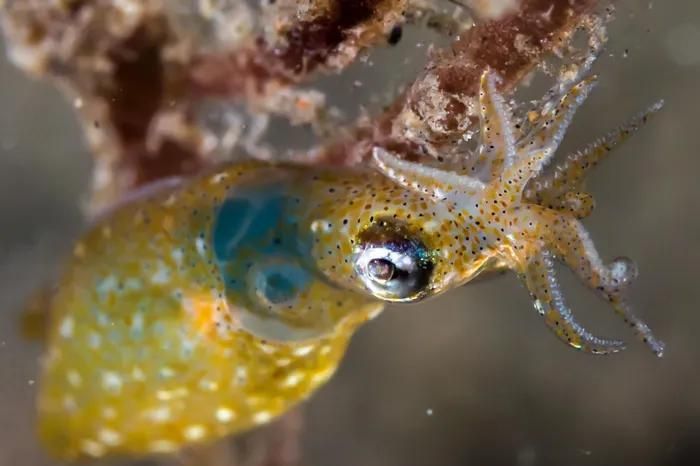The Hubble Telescope discovered a pair of small dwarf galaxies containing many interesting features
This galaxy is classified as a dwarf galaxy because of its small size and elliptical appearance.
These are smooth and featureless elliptical galaxies that look like a diffuse point of light. They are completely different from spiral galaxies, like our Milky Way, which possess a distinct structure consisting of a central axis and elongated spiral arms.
 The Hubble Telescope discovered a pair of small dwarf galaxies containing many interesting features Picture 1
The Hubble Telescope discovered a pair of small dwarf galaxies containing many interesting features Picture 1
In this image, the smooth oval shape of IC 3430 can be clearly seen. Elliptical galaxies mostly contain old stars, because they lack the gas needed to form new stars. However, in the case of IC 3430, a core of hot blue stars can be seen at the center of the galaxy. These hot stars are younger, which is rare for elliptical galaxies.
Not long ago, the Hubble Space Telescope also sent back to Earth another image showing a dwarf galaxy, called NGC 5238. This galaxy is located 14.5 million light years from Earth, but has a The structure is different and more complex than regular dwarf galaxies. It contains unusual light spots that appear quite prominently. These are groups of stars called globular clusters.
 The Hubble Telescope discovered a pair of small dwarf galaxies containing many interesting features Picture 2
The Hubble Telescope discovered a pair of small dwarf galaxies containing many interesting features Picture 2
The structure of this galaxy provides clues about its history. Astronomers think this structure comes from a historical merger, when another galaxy passed too close to this one and the two galaxies merged into one. Such a process causes pockets of stars to form as gravitational disturbances push and pull gas.
Signs of a historical merger include groups of stars within a galaxy with different chemical properties, suggesting they formed in a different environment than neighboring galaxies. By studying smaller galaxies like IC 3430, astronomers can build their understanding of how galaxies form and merge.
You should read it
- Hubble telescope discovers more than 1,000 new asteroids
- The Hubble Telescope sent back to Earth its first photo after changing its operating method
- The Hubble Space Telescope: A Retrospective With Dr. Steven Hawley
- The Hubble Telescope finds a galaxy glowing strangely from behind a dark nebula
- Lonely star glitters in the background of an amorphous galaxy in the eyes of the Hubble telescope
- The day you were born, is there anything special about space? NASA will help you observe with Hubble
- Hubble Telescope extremely rare photo of the moment of the Supernova explosion
- Admire the latest Hubble masterpiece
- Admire the special image of galaxy NGC 3175 taken with the Hubble space telescope
- Admire the 'very different' image of Saturn under the eyes of the Hubble telescope
- Admire the image of the strange jellyfish galaxy through the eyes of the Hubble telescope
- The strange object is both a double asteroid and a comet in the Solar System that confuses astronomers
May be interested

How to return to the old interface on Canva

USB flash drives can store data for 200 years

Turn Windows 11 interface into Windows 10 with just one click

How to summarize web pages on iPhone Safari

Google is sentenced to a search monopoly, with the possibility of being split up

Premiere Pro now has a version that supports ARM processors on Windows, what should you keep in mind?






 A pair of galaxies with unique question mark shapes discovered
A pair of galaxies with unique question mark shapes discovered More than 1,000 new asteroids discovered thanks to 'photobomb' phenomenon
More than 1,000 new asteroids discovered thanks to 'photobomb' phenomenon The Most Powerful Space Telescope Ever Built Will Look Back In Time To The Dark Ages Of The Universe
The Most Powerful Space Telescope Ever Built Will Look Back In Time To The Dark Ages Of The Universe Did you answer the question: How many stars in the sky?
Did you answer the question: How many stars in the sky? Admire the majestic spectacle of swirls of dust and gas in nearby galaxies
Admire the majestic spectacle of swirls of dust and gas in nearby galaxies Unique new species of squid, super small 1cm, hunts by sitting still
Unique new species of squid, super small 1cm, hunts by sitting still